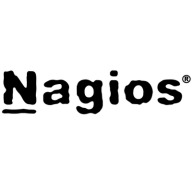

Nagios XI and Sumo Logic Observability are two prominent monitoring solutions in the IT industry. While Nagios XI is distinguished by its cost-effectiveness and strong support for traditional IT environments, Sumo Logic Observability offers advanced cloud-native features, giving it an upper hand for organizations focused on cloud capabilities.
Features: Nagios XI offers robust alerting and customizable monitoring at network, system, and application levels, making it a preferred choice for on-premises setups. Its ability to monitor out of the box with numerous available plugins and customization options adds significant value. Sumo Logic Observability excels with scalability, real-time analytics, and advanced log management, attractive to organizations focusing on cloud-native solutions. Its feature set meets modern observability needs effectively.
Room for Improvement: Nagios XI could enhance its cloud integration and expand its modern application monitoring capabilities. Simplifying user interfaces and improving documentation might also help users. Sumo Logic Observability could benefit from streamlining its learning curve and reducing overall costs for users. Enhancing query language simplicity and further automating integrations could significantly boost its usability.
Ease of Deployment and Customer Service: Nagios XI provides a flexible deployment model suitable for traditional IT configurations and offers solid customer support for its users. Sumo Logic Observability, with its cloud-based deployment, enhances accessibility and speed of integration, making it easier for cloud-focused enterprises. Although both offer strong support, Sumo Logic's cloud-first approach makes it easier for those in cloud environments.
Pricing and ROI: Nagios XI generally provides a more cost-effective solution with lower initial setup costs, delivering strong ROI for smaller to mid-sized businesses with substantial infrastructure in place. Sumo Logic Observability, while potentially more expensive, justifies cost with advanced features and efficiencies that boost ROI in dynamic cloud environments. Organizations leveraging Sumo Logic's capabilities might experience long-term benefits that outweigh the initial expenses.
If the user interface isn’t presenting data well, it becomes difficult to manage when scaling.
It is very stable.
Many tools have poor user interfaces, making them hard to manage and navigate.
The GUI could be improved. It's a bit too basic.
We are using the free, open-source version.
The pricing for the Nagios XI product is good and better than other solutions.
Nagios XI simplifies our setup and reduces the time spent configuring monitoring tools.
The alerting system is very effective.


Nagios XI provides monitoring of all mission-critical infrastructure components, including applications, services, operating systems, network protocols, systems metrics, and network infrastructure. Third-party add-ons provide tools for monitoring virtually all in-house and external applications, services, and systems.
Nagios XI uses a powerful Core 4 monitoring engine that provides users with the highest levels of server monitoring performance. This high degree of performance enables nearly limitless scalability and monitoring powers.
With Nagios XI, stakeholders can check up on their infrastructure status using the role-based web interface. Sophisticated dashboards enable access to monitoring information and third-party data. Administrators can easily set up permissions so users can only access the infrastructure they are authorized to view.
Nagios XI Benefits and Features
Some of the benefits and top features of using Nagios XI include:
Reviews from Real Users
Nagios XI stands out among its competitors for a number of reasons. Several major ones are its integration options and monitoring abilities, as well as its alerting features.
David P., a senior DevOps engineer at EML Payments Ltd, writes, “We use Nagios as a network discovery tool. We use Nagios to maintain our uptime statistics and to monitor our services. It has allowed us to be much more sophisticated in our monitoring and alerting.”
An IT-OSS manager at a comms service provider notes, “Nagios XI has a custom API feature, and we can expose custom APIs for our integration. This is a great feature.”
Sumo Logic Observability is widely used for log aggregation, analysis, and SIEM capabilities. It assists in monitoring data, creating dashboards, and managing log storage.
Sumo Logic Observability helps teams with logging in production, debugging with trace IDs, and performing queries across large datasets. Developers leverage centralized logs for error detection and tracking metrics like successful transactions and data volume. Security teams integrate it with SOAR systems for automation and enhanced security investigations.
What are the key features?Industries like finance, healthcare, and technology implement Sumo Logic Observability to monitor sensitive data, manage high transaction volumes, and ensure compliance with regulatory standards. Security and development teams benefit from its robust capabilities, enabling effective collaboration and streamlined operations.
We monitor all Cloud Monitoring Software reviews to prevent fraudulent reviews and keep review quality high. We do not post reviews by company employees or direct competitors. We validate each review for authenticity via cross-reference with LinkedIn, and personal follow-up with the reviewer when necessary.